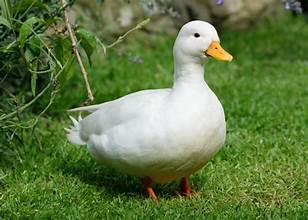
The Call of the Cutest: All About Call Ducks
Call ducks, with their adorable looks and distinctive quacks, are a popular choice for both backyard flocks and bird shows. But these little feathered friends are more than just cute faces. Let’s dive into the world of call ducks and explore their history, appearance, and what it takes to care for them.
A History of Honking:
Call ducks have a rich history, believed to have originated in the Netherlands as early as the 17th century. Originally called “decoy ducks,” they were used by hunters to lure wild ducks with their loud, high-pitched calls. Today, they’re more likely to be found in ponds or strutting around backyards, charming everyone they meet.
Small But Mighty:

Call ducks are the bantamweights of the duck world. These compact birds are known for their round heads, short bills, and deep chests. They come in a variety of colors, from classic white and black to charming blues and even mallard patterning. While females are the true chatterboxes, both males and females have a friendly and curious disposition.
Life with a Call Duck:
Thinking of welcoming call ducks to your home? Here’s what you need to know:
- Habitat: Call ducks are adaptable, but they do need a clean water source for swimming and a secure coop for shelter at night. A small flock can thrive in a backyard pond or kiddie pool.
- Diet: These little quackers are omnivores and enjoy a balanced diet of duck pellets, leafy greens, and occasional treats like mealworms.
- Companionship: Call ducks are social creatures and do best with a buddy or two. Consider getting a same-sex pair or a small group to keep them happy.
- The Noise Factor: Remember, these ducks are named for their calls! While charming, their high-pitched quacks can be quite loud. If you live close to neighbors, it’s something to consider.
Call ducks can be delightful companions, bringing a touch of feathered fun to your life. By understanding their needs and providing them with a loving home, you can enjoy the company of these charismatic little ducks for many years to come.
A Dazzling Display of Colors:

The variety of call duck colors is part of what makes them so appealing. Here’s a list of some recognized colors by the American Poultry Association (APA):
- Classics: White, Black
- Subdued Hues: Gray, Buff, Pastel (blend of light gray, soft brown, and pale blue)
- Standing Out: Snowy (males have a glossy green head, white neck stripe, and brown/gray plumage), Chocolate
- Marked Ducks: Blue Bibbed, Blue Fawn (grayish blue)
There are also other less common colors you might find from breeders, such as Khaki, Butterscotch, and Appleyard.

